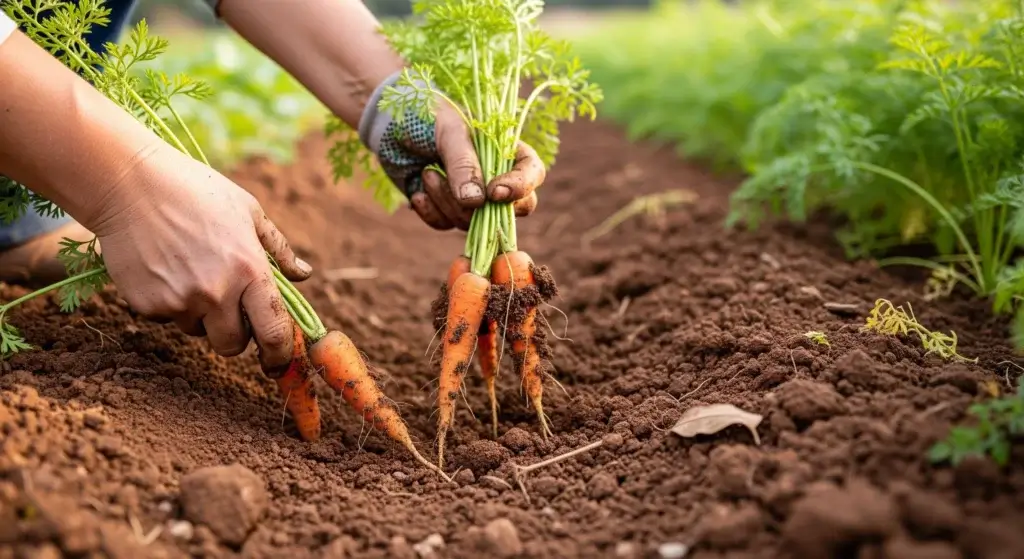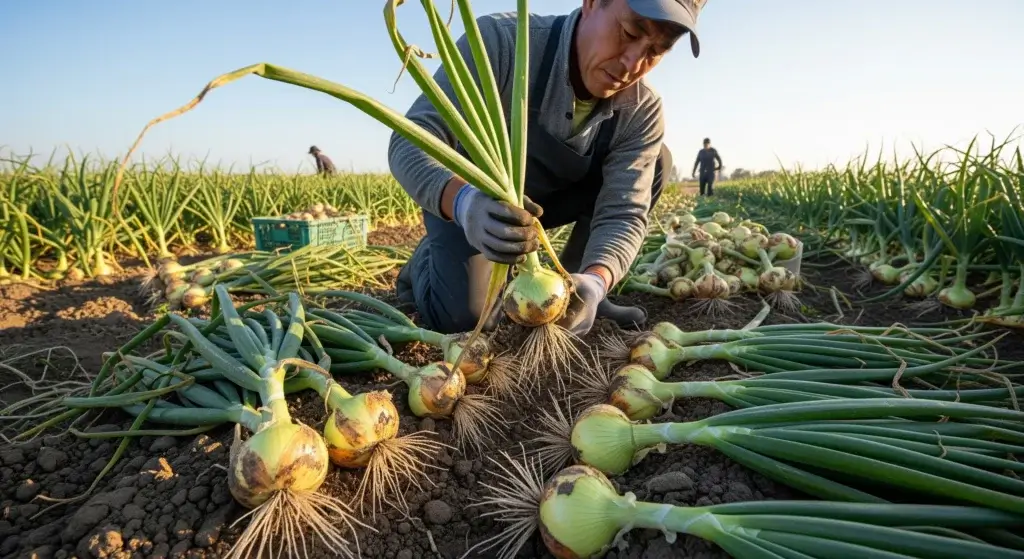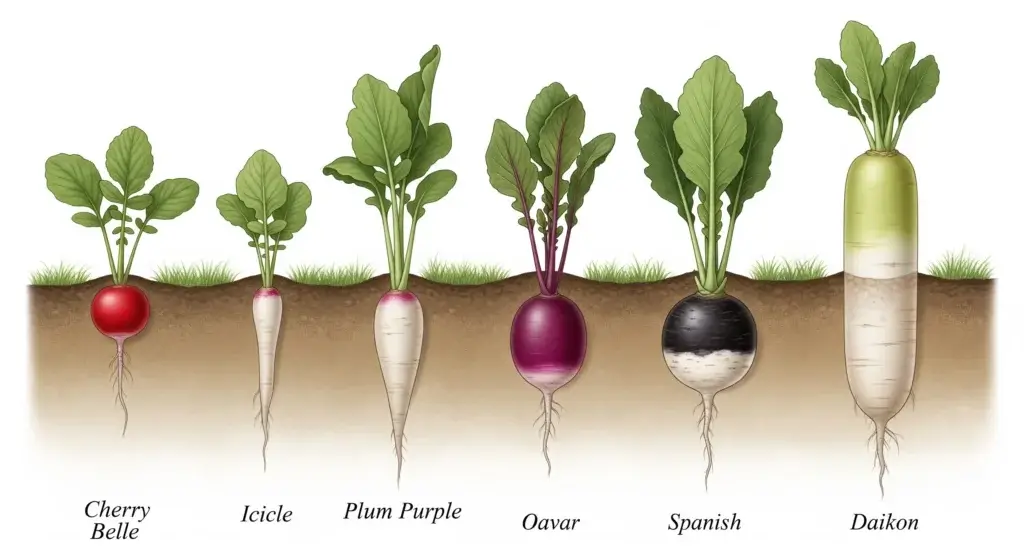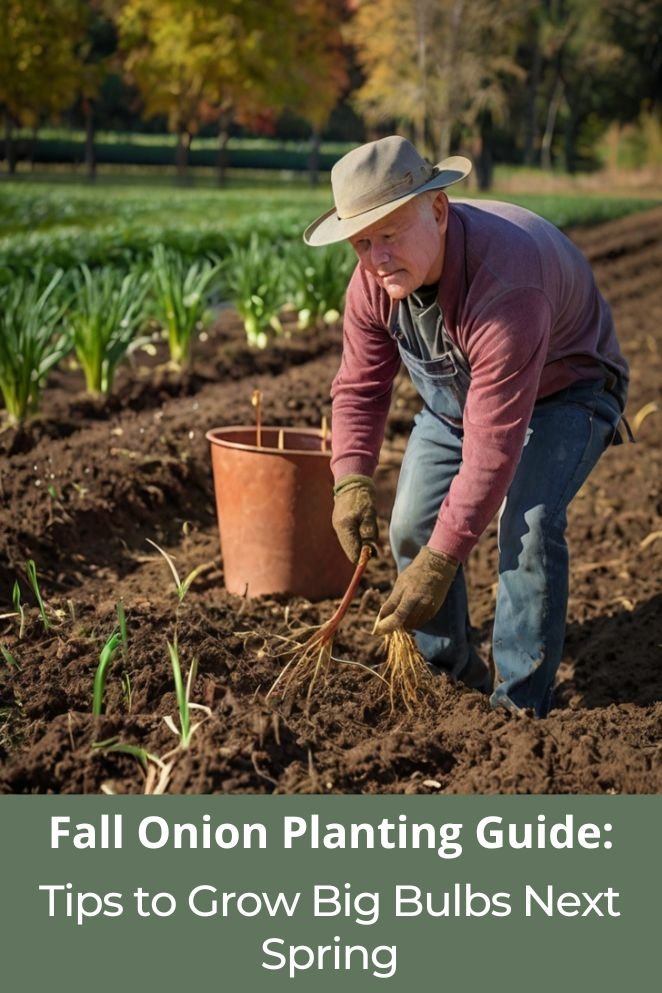
Most folks pack up their garden in fall—but onion nerds? That’s when the magic starts.
Planting onions in autumn is the ultimate gardening cheat code.
It gives your onions a head start, so by spring, they’re already bulking up like it’s their Rocky montage moment.
Here’s the science-y bit: onions are biennial, which means they want to grow roots in cool weather first, then build big, tasty bulbs later.
So when you plant in fall, you’re not fighting nature—you’re teaming up with it. Result? Bigger, better, brag-worthy onions.
Why Fall Planting Produces Superior Onions
Fall-planted onions aren’t just good—they’re in a whole different league.
Think of it like this: spring onions are still tying their shoes while fall onions are already halfway through their training montage.
When you plant in fall, onions get months to grow strong roots while the weather’s cool and chill.
So when spring hits, they don’t waste time—they go straight into bulb mode.
Spring onions, meanwhile, are still getting their roots in order.
Here’s the cool part: onions need cold weather (like 32–50°F) to kickstart bulbing—that’s called vernalization, and fall gives them exactly what they’re looking for.
Plus, all that fall and winter rain? Less watering for you, less stress for the plants. Win-win.
And yeah, the results are real—fall onions grow up to 50% bigger than spring ones.
Bigger bulbs, more yield, and way more bragging rights when harvest season hits.
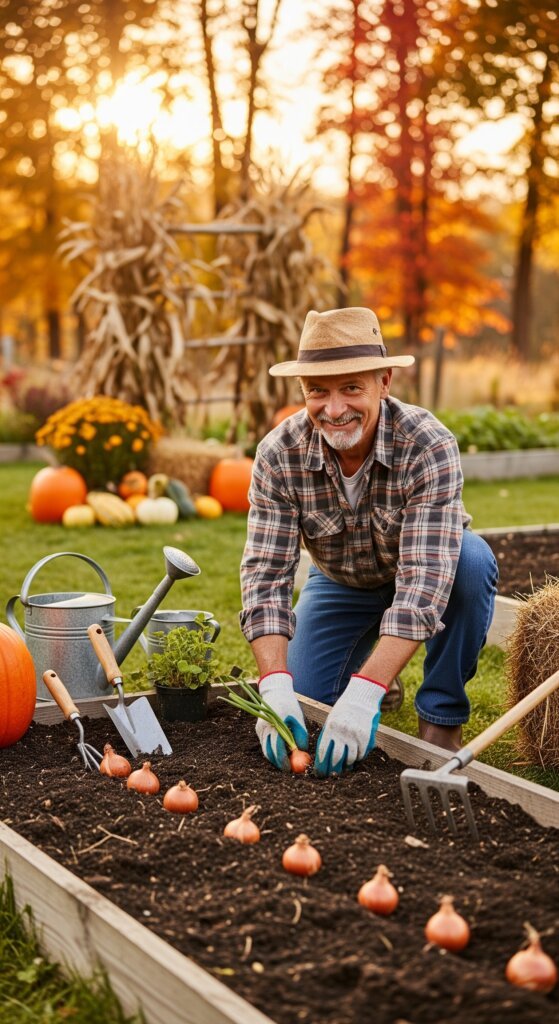
Selecting the Right Onion Varieties for Fall Planting
Not every onion’s built for the fall planting life—you’ve gotta pick the right variety if you want those big, brag-worthy bulbs come spring.
Think of it like casting the perfect crew for a heist: everyone needs to know their role and handle the pressure.
Short-day onions
Short-day onions are your go-to in the South and warmer zones.
They only need 10–12 hours of daylight to start bulbing, so they’re quick on the draw.
Top picks? Yellow Granex (hello, Vidalia sweetness), Red Burgundy, and White Bermuda.
Perfect for mild winters and early wins.
Intermediate-day onions
Intermediate-day onions are the all-arounders.
They do great in USDA zones 6–9 and need about 12–14 hours of light.
Look for crowd-pleasers like Candy, Super Star, and Red Baron—they’ve got flavor, good storage vibes, and solid performance.
Long-day onions?
Long-day onions? They’re trickier.
They need 14–16 hours of daylight to bulb up, so they’re better for colder zones (3–5) where winter actually feels like winter.
If you’re up north, go for champs like Copra and Patterson.
But skip these if you’re in a mild zone—they’ll just get confused and sulk.
Check the label. If it says “overwintering” or “fall-planted,” you’re on the right track.
These are bred to tough out the cold and still deliver big, beautiful bulbs when the season flips.
Optimal Timing for Fall Onion Planting
Timing your fall onion planting is everything.
Think of it like baking bread—you need the right temp and timing or everything falls apart.
Plant too early? Your onions freak out and start bulbing like it’s spring break in Vegas.
Too late? They barely root before winter hits and basically ghost your garden.
Let’s break it down by zone like the sorting hat placing Hogwarts students—except, you know, for onions.
Northern zones (3–6)
You’ve got a tight window here.
Aim to plant 6–8 weeks before your first hard frost—usually late August to mid-September.
Your goal? Let those roots settle in like it’s their new apartment before the cold evicts any late bloomers.
Central zones (7–8)
You’re the Goldilocks zone—not too hot, not too cold, but still tricky.
Plant between mid-September and early October.
If you plant too early, your onions might bolt like they just saw a spoiler from Stranger Things. Keep it chill (literally).
Southern zones (9–11)
Lucky you, with your chill winters and long growing season.
You can plant late October through early December.
Your onions will just hang out and vibe through winter, growing slowly like a Netflix series getting renewed each year.
Pro tip: Don’t just follow your calendar like a robot—feel the soil.
You want it sitting pretty at 50–60°F at planting depth. That’s the sweet spot where roots grow strong, but tops don’t go bananas too soon.
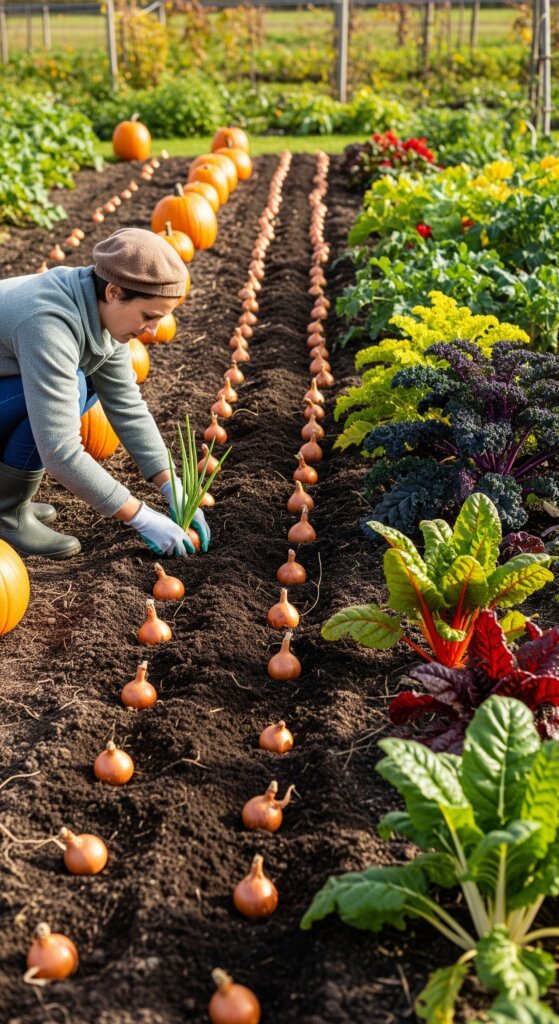
Soil Preparation and Site Selection
Let’s be real—onions are picky renters.
They want prime soil real estate: no flooding, plenty of sunshine, good vibes, and zero drama (aka fungal diseases).
So if you’re gonna plant them this fall, you’ve gotta prep the place like you’re hosting Beyoncé for brunch.
Soil requirements
Bad drainage kills more onions than the actual cold.
Yep—wet feet = dead onions. Here’s what they really want under their roots:
- pH 6.0–7.0 (yes, onions are kinda bougie like that)
- Organic matter 3–4%—think compost, not couch crumbs
- Drainage game strong—if water’s hangin’ out longer than 24 hours after a rain, nope
- Texture: loose and friable (fancy speak for fluffy, like cake batter)
Start prepping 4–6 weeks before planting—toss in 2–3 inches of compost or aged manure and mix it in like you’re making the best garden lasagna ever.
That stuff boosts nutrients and keeps water from pooling like it’s trying to throw a pool party.
Site selection considerations
Picking the right spot is like casting the lead in a drama series—don’t mess it up:
- Full sun (minimum 6–8 hours unless your onions moonlight as vampires)
- Shelter from harsh winter winds (no one likes a face full of frost)
- Raised beds or a slight slope—because soggy onions = sad onions
- Close to a water source—you’ll want to hydrate them, not hike for it
Avoid spots that collect water in winter or hoard snow like it’s building an igloo.
Those are basically horror movie sets for onions—hello, root rot and fungal doom.
Planting Techniques and Best Practices
Okay, you’ve got your soil prepped, your sun-drenched spot picked out, and now it’s go time.
But onions are divas.
You can’t just toss them in the ground like wildflower seeds and hope for the best.
Whether you’re planting sets, transplants, or going full-on seed nerd, here’s how to get it right from day one.
Onion sets planting
Sets are like the prequel to your full-blown onion saga, but you gotta choose wisely:
- Pick the tiny ones (smaller than a dime) to avoid “bolting drama” when temps swing
- Always plant pointy side up—like the onion is giving a little salute
- Pop ’em in 1–2 inches deep, spaced 4–6 inches apart, with rows 12–18 inches apart
- Gently press the soil down like you’re tucking in a baby—not smashing a burger
Transplant installation
These are your gangly middle-schoolers ready to grow into bulbous legends:
- Look for strong stems—pencil-thick is the gold standard
- Plant them at the same depth they were growing in their starter pots
- Give them 6–8 inches of personal space (they don’t like to cuddle)
- Water like you mean it—flush out air pockets so they don’t dry out and throw a tantrum
Direct seeding approach
Want full bragging rights? Start from seed. Just know it’s a bit of a long game:
- Plant seeds ½ inch deep in fluffy, prepped soil
- Keep the soil moist but not muddy till they sprout (usually 10–14 days)
- Once seedlings hit 4–6 inches tall, thin them out so they’re spaced like transplants
- If you live somewhere cold enough to film Frozen 3, toss on a row cover for winter armor
Bonus round
Once your onion babies are settled in, throw on a cozy 2–3 inch layer of mulch.
Straw, shredded leaves, or even grass clippings are perfect.
Think of it as a weighted blanket for your soil—it keeps weeds out, moisture in, and roots warm enough to survive winter like champs.
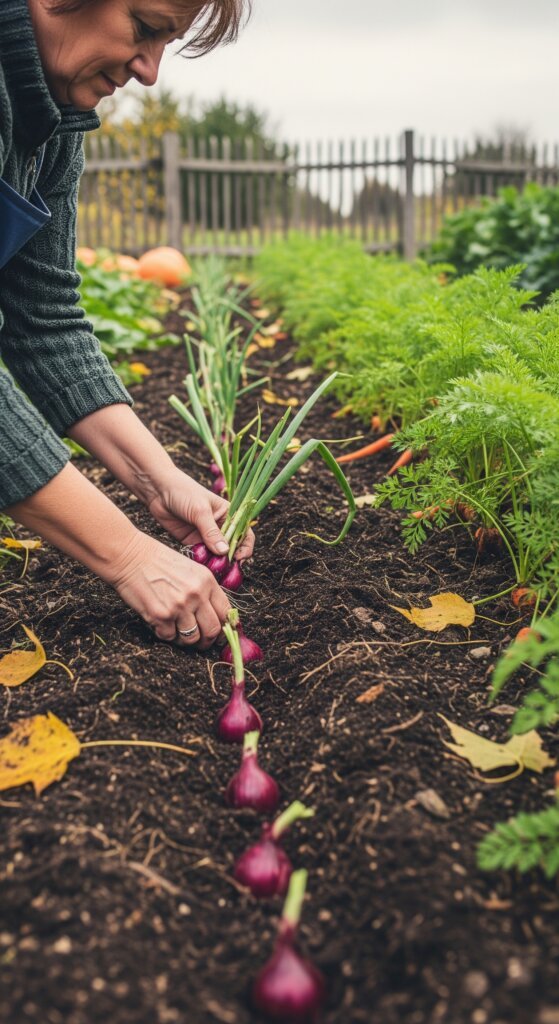
Troubleshooting Common Challenges
Even the best gardeners hit a snag now and then.
Think of it like your favorite TV show having a few “meh” episodes—totally normal.
If your fall onions are throwing tantrums, here’s the lowdown on common issues and how to boss them back into shape.
Premature bolting
This usually happens if you plant too early or pick the wrong onion type.
It’s like sending a teenager to college before they’re ready.
Stick to short-day varieties and plant on schedule for your zone. No early parties, please.
Winter kill
Cold is tough, but soggy feet are the death of onions.
If your bulbs are checking out over winter, your soil might be turning into a swamp spa.
Fix the drainage or move your onions to higher ground—no one likes a flooded basement, even onions.
Small bulb development
Too many onions squished together, not enough food, or a growing season that’s basically a speed run can all cause tiny bulbs.
Give them space (no onion mosh pit), feed them regularly, and let them chill long enough to grow big and strong.
Storage problems
Harvesting onions in wet weather or skipping the curing step is like trying to store soggy pizza—gross and doomed.
Make sure you harvest on dry days and cure those bulbs properly so they’re tough enough to last like a Netflix binge marathon.
Wrap-Up: Fall Onions Are the Power Move
Planting onions in fall is like investing in garden crypto—with way less risk and way more flavor.
You get a head start on the season, dodge most pests, and grow bulbs so big they’ll make grocery store onions look like amateurs.
If you time it right, pick the right varieties, and show your soil some love, your future spring self is gonna be high-fiving you with every harvest.
Fall onions = bigger yields, earlier bulbs, and serious garden cred.
So go on—prep now, plant smart, and by next spring, you’ll be harvesting like a backyard boss.
Your onions (and your ego) will thank you.

